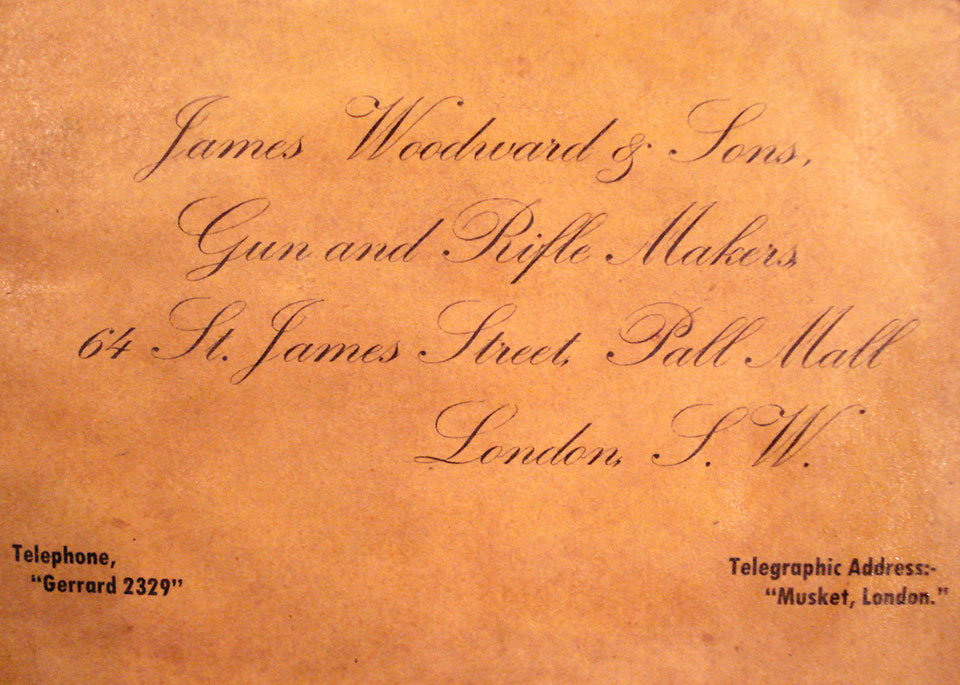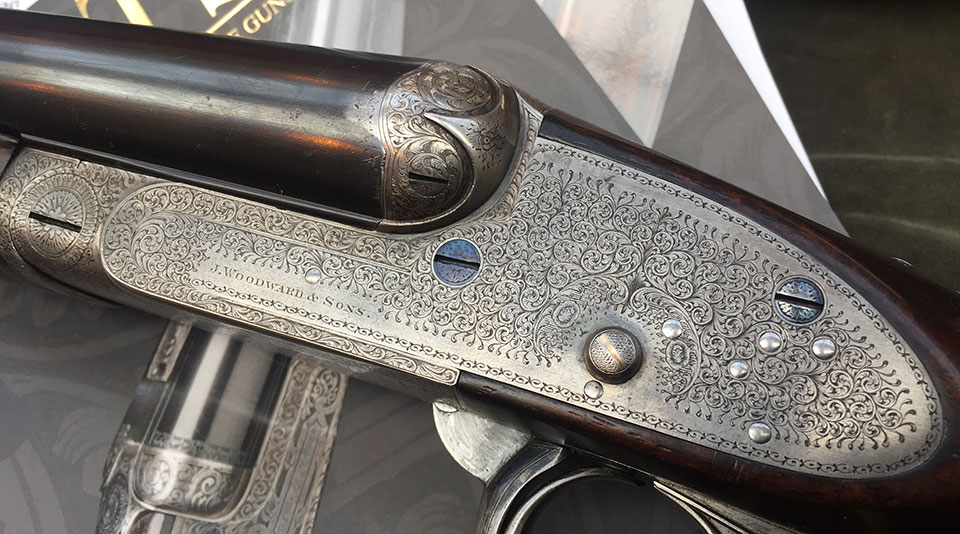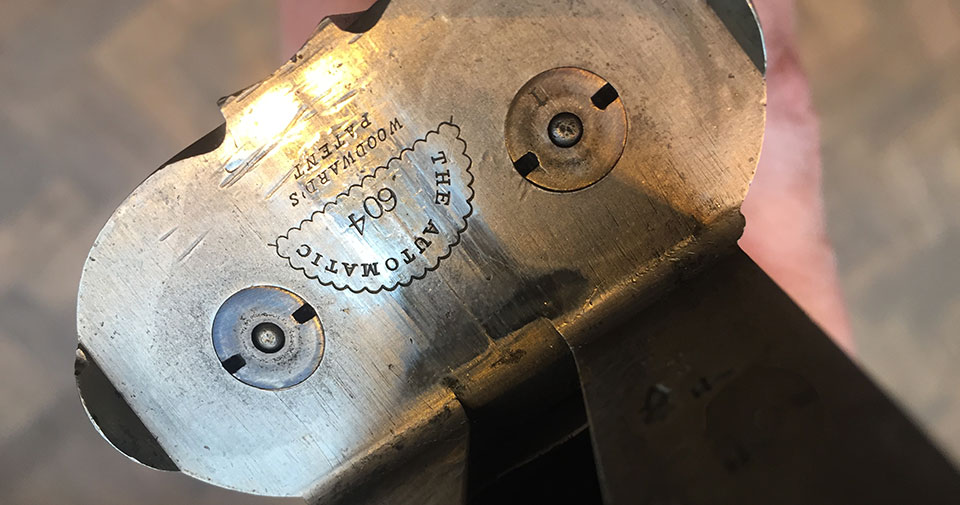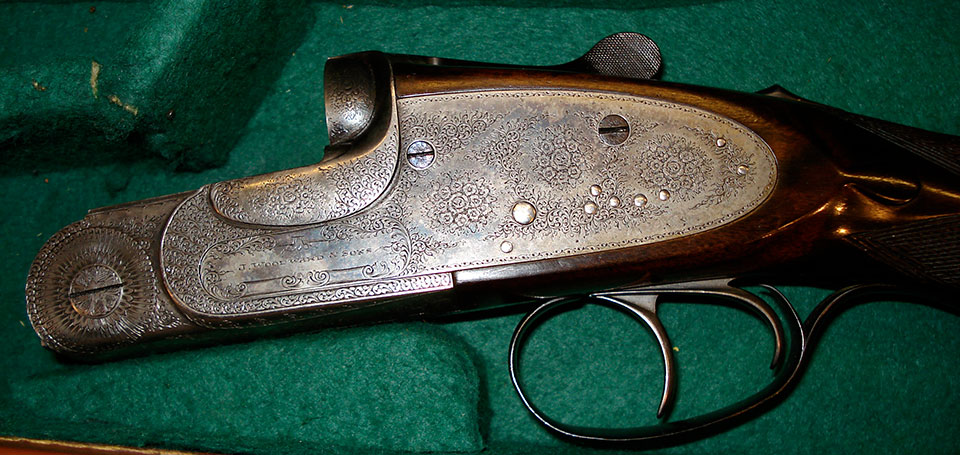The Woodward family of gunmakers are perhaps one of the most enigmatic of the ‘modern’ London gun trade. Although their guns were considered equal in quality to that of Purdey, and are still much prized by collectors, very little has been written about them.
This is at least partly due to the fact that very few records survive, and no surviving family members have been traced. This series of articles is drawn from the research for my recent book on the company, and discusses in brief the family’s origins, history and production based upon surviving sources.
Although the precise origins of the Woodward family are unknown, it is possible to say that the family were already involved in gunmaking. The first James Woodward’s father had been working for the Board of Ordnance as a lock filer since 1806, first at the Tower of London and then at the government’s manufactory at Lewisham from 1808. It was there, at the Armoury Mills, that James was born in 1813, followed by two sisters in 1815 and 1817.
he was apprenticed to Charles Moore (II) in 1827, at the age of 14
Their father was employed at Lewisham up until December 1818, shortly before the site was sold off, and was transferred to the new factory at Enfield Lock, before becoming a Viewer (Inspector) at the Tower. By that time the family were living on Severne Street, just north of Cable Street. His fourth child, George, was born in 1822 and appears to have followed his father into the gun trade as well.
It is most likely that James got his start through his father’s connections. Although no apprenticeship deeds survive, it has always been maintained that he was apprenticed to Charles Moore (II) in 1827, at the age of 14. Moore’s father, Charles (I) had started in Chichester before moving to London in the 1790s, supplying arms to both the East India Company and the whaling industry, as well as private individuals. However, it was Charles (II) who moved the company to the West End, opening his first store on 2 Regent Circus (now Piccadilly Circus) in 1821, the same year his father died.

By the time he took James on as an apprentice, Moore was at his third premises; 77 St. James’s Street. This was next door to the Thatched House Tavern, and very close to the Palace of St. James’s, which Charles became Furbisher to, along with Hampton Court, in 1829. He went on to become Gunmaker-in-Ordinary to King William IV in 1836 and is recorded as such in John Tallis’s Street Views of London. This was in addition to having premises in Paris, overseen by Charles’s son, William, and a shooting ground at the Kensington Gravel Pits. James was working for a company of quality and renown.
James Junior was born in 1838, followed by a daughter
James married in 1837, and his first son, James Junior, was born in 1838, followed by a daughter two years later. They also shared their home with James Senior’s younger brother, George, who was training as a gunmaker, possibly as James’s apprentice. By 1843, when James’s last child, Charles, was born, the family were living on St. James’s Street. The street number isn’t recorded, although it is most likely they were living behind the shop. Where this was isn’t clear, as around this time No. 77 and the Thatched House Tavern were demolished to make way for the Conservative Club, and the company moved to what would become Woodward’s most famous premises – No. 64 St. James’s Street.
At the same time as the company was moving premises, it was also changing name, becoming ‘Moore & Woodward’. Several explanations as to the cause of this have been advanced, but it appears that Charles decided to retire, transferring the company to his son, William, and James. Both men were virtually the same age, and he may have felt that the partnership would help them to grow the company.
William died suddenly in 1847 at the age of just 34
As it was, the partnership was not to last very long, as William died suddenly in 1847 at the age of just 34, and it is his will that confirms the existence of the partnership. The company name remained unchanged until the 1860s, but whether James purchased or was given William’s shares is not known. The last recorded reference to ‘Moore & Woodward’ dates to 1863, and by 1868 the company had become simply ‘James Woodward’. However, the company would continue to refer to itself as ‘Successors to Charles Moore’ well into the 1870s, and this also appears to be the source to the establishment date of 1800 that they used occasionally in advertising.
it seems likely that both of his sons had joined the business,
Although only James Senior was mentioned at this time, it seems likely that both of his sons had joined the business, both describing themselves as a ‘Gunmaker’ in the 1861 census. It was not until October 1872, though, that the company started to advertise itself as ‘James Woodward & Sons’. It appears that James Senior, having reached the age of 59, had decided to retire. This is suggested by the fact that the company’s first patent was registered that same year by ‘James Woodward the younger’, together with John Emme.
The same wording was also used when the patent for Thomas Southgate’s ‘Automatic’ action was filed four years later. These two designs appear to have become the mainstay of the firm’s production up until the turn of the century.

They were supplemented by a variety of both hammer and hammerless actions, although it is unclear how many (if any) used their third patent, a hammerless action designed by Frederick Beesley. At least a few used a form of lever-cocking action, apparently based upon the Gibbs & Pitt design, while others used the barrel-cocking Rogers action.
For the family, the last quarter of the nineteenth century must have felt very stable, with James Senior retiring to Ladbroke Grove and his two sons in charge of the business. However, all of that changed over just a five-year period, starting in 1895.
the only male heir alive to continue the company was Charles’ only son
The younger son, Charles, died first, at the beginning of 1895. He was followed by his father in 1899, and then James Junior died childless in 1900. This meant that the only male heir alive to continue the company was Charles’ only son, Charles Littleton (sometimes Lyttleton) Woodward, who was just 23 when his uncle died.

Perhaps because of his age, James Junior willed the business equally to his nephew and his shop manager, William Potter Evershed. Although not a gunmaker, Evershed was ten years older than Charles Junior and more experienced in running the business.
It was these two men who jointly registered the two patents for the ‘Under & Over’ action in 1913, together with Charles Hill. However, it was not a happy relationship, with Charles reputedly bullying William until the partnership was formally dissolved in 1916.
For the next thirty-two years, Charles was the company’s sole owner, as well as one of its salesmen, undertaking overseas sales trips to America in 1923 and Egypt in 1931.
prices remained virtually unchanged between 1921 and about 1941
However, the company suffered during the Great Depression, and their 1936 price list shows them broadening their range of guns to include boxlocks as well as their traditional sidelock actions. It is unclear how far this assisted in supporting the company, but it is worth noting that their prices remained virtually unchanged between 1921 and about 1941.
However, their location had, as in 1937 their premises at No. 64 St. James’s Street were redeveloped, necessitating a move to their final address one street over, at No. 29 Bury Street, where they were based until 1948. By that time, Charles Woodward was 71, and without children or relatives interested in taking on the company.

He approached Tom Purdey about buying the company in May that year, and the terms of the sale were confirmed by October. Purdey formally took over at the beginning of January 1949, leaving Charles to enjoy his retirement. Sadly, this was not to be a long one, as he died during an operation for throat cancer only two years later, ending the male Woodward line.
Dr. Nicholas Harlow is Gunroom Manager at James Purdey & Sons, London.
Published by Vintage Guns Ltd on (modified )




